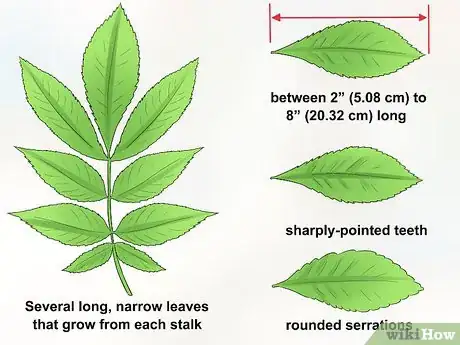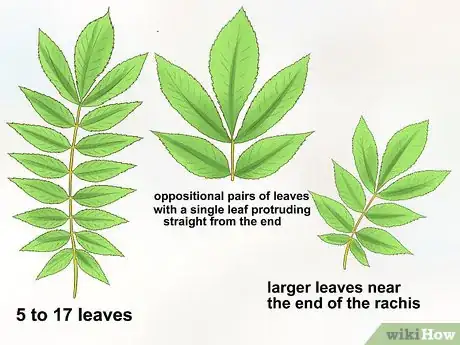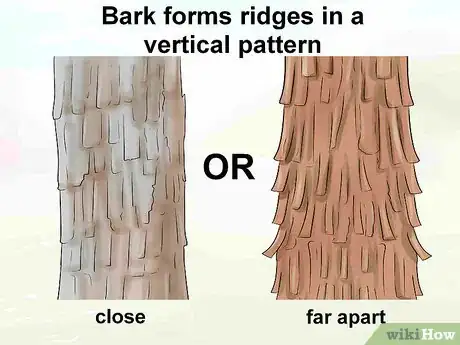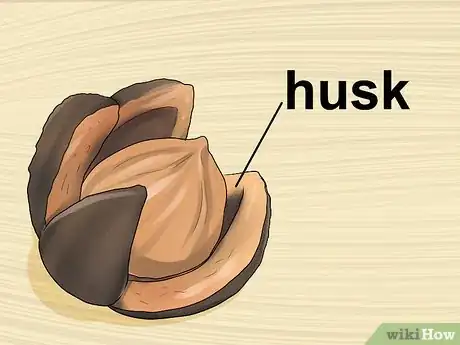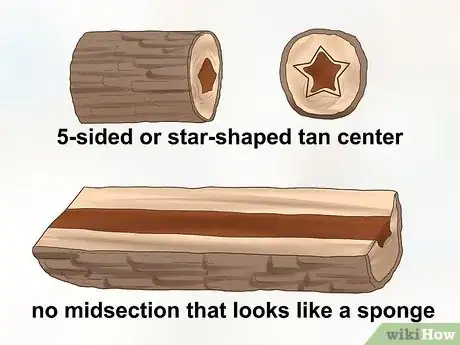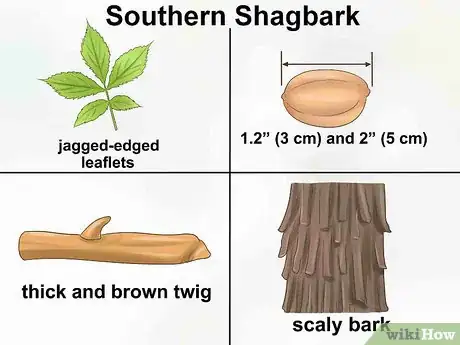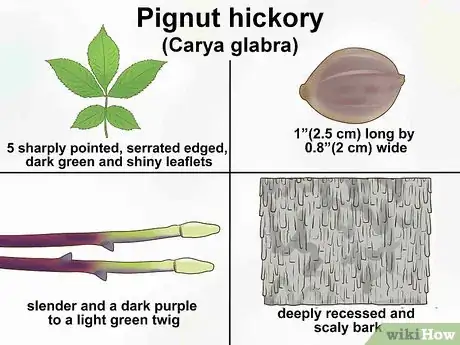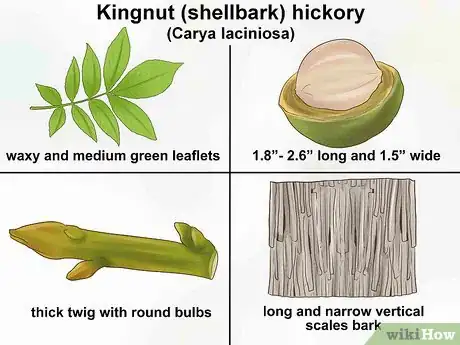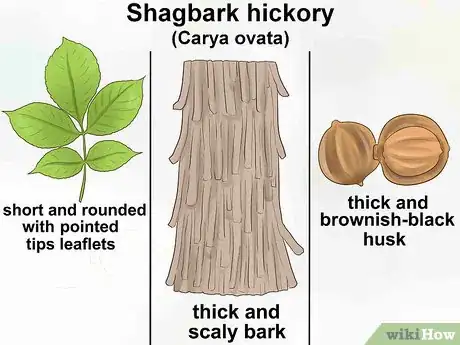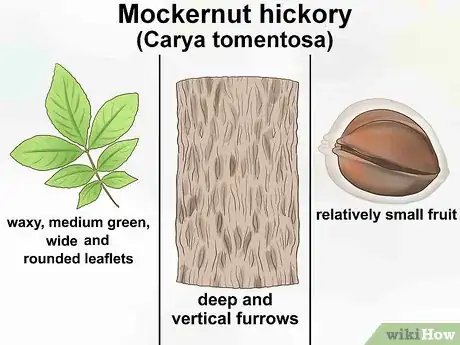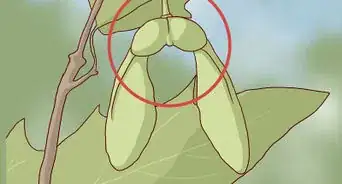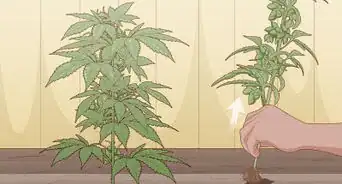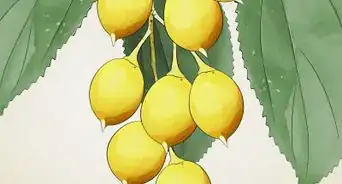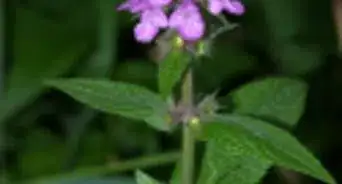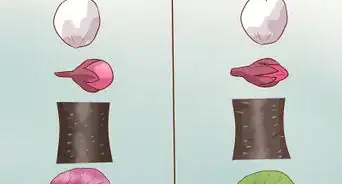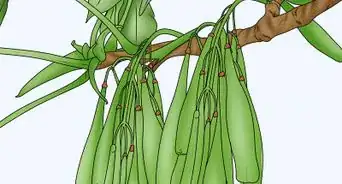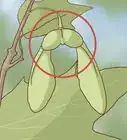This article was co-authored by Michael Simpson, PhD. Dr. Michael Simpson (Mike) is a Registered Professional Biologist in British Columbia, Canada. He has over 20 years of experience in ecology research and professional practice in Britain and North America, with an emphasis on plants and biological diversity. Mike also specializes in science communication and providing education and technical support for ecology projects. Mike received a BSc with honors in Ecology and an MA in Society, Science, and Nature from The University of Lancaster in England as well as a Ph.D. from the University of Alberta. He has worked in British, North American, and South American ecosystems, and with First Nations communities, non-profits, government, academia, and industry.
There are 12 references cited in this article, which can be found at the bottom of the page.
wikiHow marks an article as reader-approved once it receives enough positive feedback. This article received 15 testimonials and 84% of readers who voted found it helpful, earning it our reader-approved status.
This article has been viewed 1,073,772 times.
Hickory - belonging to a section of the walnut family - is a canopy tree that is prevalent in eastern North America, although other species of hickory have been known to exist in Europe, Africa and Asia. The hickory tree produces a dense, strong, and shock-resistant wood that is commonly used to make tool handles, furniture, and decorative architectural elements.[1] In addition, many types of hickory are sought for use in the content and preparation of food, and can be useful in survival situations. These guidelines will help you identify any hickory tree, so you can get to work on whatever you may need it for.
Steps
Hickory or Not?
-
1Look at the leaves.[2] Features that differentiate hickory leaves from the leaves of other types of trees are:
- Several long, narrow leaves that grow from each stalk.
- Leaf size. Depending on the species, a hickory leaflet may be anywhere between 2 inches (5.08 cm) to 8 inches (20.32 cm) long.
- Serrated edges. Some may have sharply-pointed teeth, others more rounded serrations.
- In addition to leaves, hickory trees can also have long, drooping catkins (flower clusters) that occur in groups of three.[3]
-
2Look at the shape of the stalks. Hickory leaves are compound leaves that grow from a distinctive stalk, or rachis. Hickory leaves generally have 5 to 7 leaflets, and in some species the leaflets nearer the tip of the leaf are larger than those nearer the base. Hickory rachis features include:[4]
- Leaves that grow in directly oppositional pairs, perpendicular to the stalk, with a single leaf protruding straight from the end.
- Visibly larger leaves near the end of the rachis.
Advertisement -
3Look at the bark. Hickory trees have bark that forms ridges in a vertical pattern. These ridges may be shallow or deep, far apart or close together, but always vertical. Additionally, some hickory bark becomes raised at the plate edges as the tree matures, and eventually flakes off, from top to bottom.
-
4Look at the nuts. Hickory nuts have a woody outer shell, or husk. This husk starts out green but will harden to dark to light brown with a seam around the middle.[5] The thickness of the husk can vary depending on species, but the nut inside will be white or tan and roughly the size of a gumball.[6]
-
5Look at the pith. The pith of a tree is the central column of its branches. All hickory tress have a solid, tan, 5-sided pith. Look at the end of the branch where you cut it from the tree. If you see a 5-sided or star-shaped tan center, the branch meets two of a hickory's requirements. To see if the pith is solid, cut off a small living branch and slice it in half along its length.[7] If the branch is solid with no midsection that looks like a sponge or a honeycomb, the pith is solid.
Identifying the Type of Hickory
-
1Identify a Southern shagbark hickory (Carya caronlinae septentrionalis). The southern shagbark grows in limestone soils. Its leaflets are jagged-edged and come to sharp points, and grow 5 to a rachis. Shagbark twigs are thick and brown, and the bark is scaly and raised at the edges, giving it a shaggy appearance. The fruit of the shagbark, which grows to between 1.2 inches (3 cm) and 2 inches (5 cm) long, is oval and round, and is covered in a thick, dark husk. The shagbark nut meat is sweet.[8]
-
2Identify a Bitternut hickory (Carya cordiformis). This species grows in moist forest, also called steam banks. The leaflets, which grow 9 to a rachis, are broad and smooth around the edges. The bitternut hickory fruit grows to be between 0.8 inch (2 cm) and 1.6 inches (4 cm) long, and is enclosed in a thin, dark brown husk. The kernel is bitter, as the plant's name suggests. Bitternut twigs are slender and green, and have distinctive yellow buds. The bark of a bitternut is light grayish-brown, and does not split deeply enough to flake.[9]
-
3Identify a Pignut hickory (Carya glabra). Pignut hickory trees grow on broad ridges. Their leaves consist of 5 sharply pointed, serrated edged, dark green and shiny leaflets on a short rachis. The thin pignut husk is light brown, and the round fruit, which grows to be about 1 inch (2.5 cm) long by 0.8 inch (2 cm) wide, is a similar light brown. Twigs are slender and a dark purple to a light green. The bark of a pignut is deeply recessed and scaly, but does not flake at the plate edges.[10]
-
4Identify a Kingnut (shellbark) hickory (Carya laciniosa). The shellbark grows in wet, bottomland forests. Its leaflets are waxy and medium green, and come at least 9 to a rachis. At between 1.8 inches (4.5 cm) and 2.6 inches (6.5 cm) long and 1.5 inches (3.8 cm) wide, the fruit of the kingnut is the largest of the hickory species, and is enclosed by a thick, dark brown husk. The kingnut produces a sweet kernel. The twigs are thick, with round bulbs. The bark of the kingnut forms long, narrow vertical scales, which peel off from the top and bottom.
-
5Identify a red hickory (Carya ovalis). The red hickory grows on slopes and forest ridges. Its leaflets are green and red, slender and tapered, and grow 5 or more to a rachis. The edges of the red hickory leaflets are smoothly serrated, as opposed to the sharp teeth of the pignut and southern shagbark. Red hickory nuts are 1 inch (2.5 cm) to 1.2 inches (3 cm) long and 0.8 inch (2 cm) wide, round, light brown and thin-shelled, and have a sweet taste. The husks are thin and dark brown. Red hickory bark is rough and deeply ridged into narrow vertical strips, but the bark does not scale or flake.[11]
-
6Identify a Shagbark hickory (Carya ovata). Shagbark hickory trees grow in various environments, although they thrive in drained areas. The leaflets are light green, short and rounded, with pointed tips, and grow 5 or 7 to a rachis. The nuts of a shagbark hickory are 1.2 inches (3 cm) to 2 inches (5 cm) long, light brown, thin-shelled and sweet tasting, and are enclosed in a thick, brownish-black husk. As the name suggests, the shagbark tree is characterized by thick, scaly bark, giving the trunk a shaggy appearance.[12]
-
7Identify a sand hickory (Carya palida). The sand hickory has matte, light green, narrow, pointed and smooth-edged leaflets. The nuts are the smallest of the hickory species, averaging only 0.5 inch (13 mm) to 1.45 inches (37 mm) long, with thin husks and shells and lightly colored nut meat. They are also round and covered with fine hairs. The nut meat of a sand hickory is sweet. Sand hickory bark is relatively smooth, and forms a compacted network of shallow furrows.[13]
-
8Identify a Mockernut hickory (Carya tomentosa). Mockernut hickory trees grow in dry land, on slopes and ridges. The leaflets are waxy, medium green, wide and rounded, and grow 7 or more to a rachis. The edges of mockernut leaflets are softly serrated, with dull-edged teeth. The fruit of the mockernut is relatively small, at only 1.5 inches (3.8 cm) to 2 inches (5 cm) long, and contained by a thick, dark brown husk. Mockernut bark is characterized by deep, vertical furrows that are close together. The bark may also begin to furl at the edges and flake away as the mockernut reaches full [14]
Expert Q&A
-
QuestionWhat is a hickory leaf look like?
 Michael Simpson, PhDDr. Michael Simpson (Mike) is a Registered Professional Biologist in British Columbia, Canada. He has over 20 years of experience in ecology research and professional practice in Britain and North America, with an emphasis on plants and biological diversity. Mike also specializes in science communication and providing education and technical support for ecology projects. Mike received a BSc with honors in Ecology and an MA in Society, Science, and Nature from The University of Lancaster in England as well as a Ph.D. from the University of Alberta. He has worked in British, North American, and South American ecosystems, and with First Nations communities, non-profits, government, academia, and industry.
Michael Simpson, PhDDr. Michael Simpson (Mike) is a Registered Professional Biologist in British Columbia, Canada. He has over 20 years of experience in ecology research and professional practice in Britain and North America, with an emphasis on plants and biological diversity. Mike also specializes in science communication and providing education and technical support for ecology projects. Mike received a BSc with honors in Ecology and an MA in Society, Science, and Nature from The University of Lancaster in England as well as a Ph.D. from the University of Alberta. He has worked in British, North American, and South American ecosystems, and with First Nations communities, non-profits, government, academia, and industry.
Registered Professional Biologist Hickory leaves are compounded, which means they are comprised of several leaflets paired on opposite sides of what looks like a stem but is actually a leaf’s midrib (central vein).
Hickory leaves are compounded, which means they are comprised of several leaflets paired on opposite sides of what looks like a stem but is actually a leaf’s midrib (central vein). -
QuestionHow do you identify hickory nuts?
 Michael Simpson, PhDDr. Michael Simpson (Mike) is a Registered Professional Biologist in British Columbia, Canada. He has over 20 years of experience in ecology research and professional practice in Britain and North America, with an emphasis on plants and biological diversity. Mike also specializes in science communication and providing education and technical support for ecology projects. Mike received a BSc with honors in Ecology and an MA in Society, Science, and Nature from The University of Lancaster in England as well as a Ph.D. from the University of Alberta. He has worked in British, North American, and South American ecosystems, and with First Nations communities, non-profits, government, academia, and industry.
Michael Simpson, PhDDr. Michael Simpson (Mike) is a Registered Professional Biologist in British Columbia, Canada. He has over 20 years of experience in ecology research and professional practice in Britain and North America, with an emphasis on plants and biological diversity. Mike also specializes in science communication and providing education and technical support for ecology projects. Mike received a BSc with honors in Ecology and an MA in Society, Science, and Nature from The University of Lancaster in England as well as a Ph.D. from the University of Alberta. He has worked in British, North American, and South American ecosystems, and with First Nations communities, non-profits, government, academia, and industry.
Registered Professional Biologist Hickory trees are renowned for their nuts, which are enclosed in round or oval green husks while they ripen.
Hickory trees are renowned for their nuts, which are enclosed in round or oval green husks while they ripen. -
QuestionHow similar to black walnut are hickory trees, and how do I tell them apart?
 Community AnswerBlack walnuts are quite large in comparison to hickory nuts. When looking at a black walnut, it will most likely be coated in a green, powdery looking substance. Hickory nuts do not have this outer coating. Black walnuts also have a distinctly chambered pith.
Community AnswerBlack walnuts are quite large in comparison to hickory nuts. When looking at a black walnut, it will most likely be coated in a green, powdery looking substance. Hickory nuts do not have this outer coating. Black walnuts also have a distinctly chambered pith.
References
- ↑ https://www.britannica.com/plant/hickory-plant
- ↑ http://www.gardenguides.com/95498-hickory-leaf-identification.html
- ↑ Michael Simpson, PhD. Registered Professional Biologist. Expert Interview. 25 June 2021.
- ↑ Michael Simpson, PhD. Registered Professional Biologist. Expert Interview. 25 June 2021.
- ↑ Michael Simpson, PhD. Registered Professional Biologist. Expert Interview. 25 June 2021.
- ↑ https://extension.tennessee.edu/publications/documents/pb1810.pdf
- ↑ https://aggie-horticulture.tamu.edu/carya/species/IDGENSP.HTM
- ↑ https://cgru.usda.gov/carya/species/carolinae-septentrionalis/sepsp.htm
- ↑ https://nfs.unl.edu/woody-plants/bitternut-hickory
- ↑ http://dendro.cnre.vt.edu/dendrology/syllabus/factsheet.cfm?ID=19
- ↑ http://dendro.cnre.vt.edu/dendrology/syllabus/factsheet.cfm?ID=826
- ↑ https://www.nwf.org/Educational-Resources/Wildlife-Guide/Plants-and-Fungi/Shagbark-Hickory
- ↑ http://www.floraofalabama.org/Plant.aspx?id=2370
- ↑ https://mdc.mo.gov/discover-nature/field-guide/mockernut-hickory
About This Article
If you’re not sure how to identify a hickory tree, examine the leaves closely. Hickory leaves will have several long, narrow leaves growing in oppositional pairs from each stalk, and each leaf may be anywhere from 2-8 inches long. The leaves will be serrated, with either sharply-pointed or rounded serrations. The bark of a hickory tree forms ridges in a vertical pattern. If you cut a hickory branch, the pith, or center, should form a 5-sided shape like a star. For tips on identifying the different types of hickory, keep reading!
